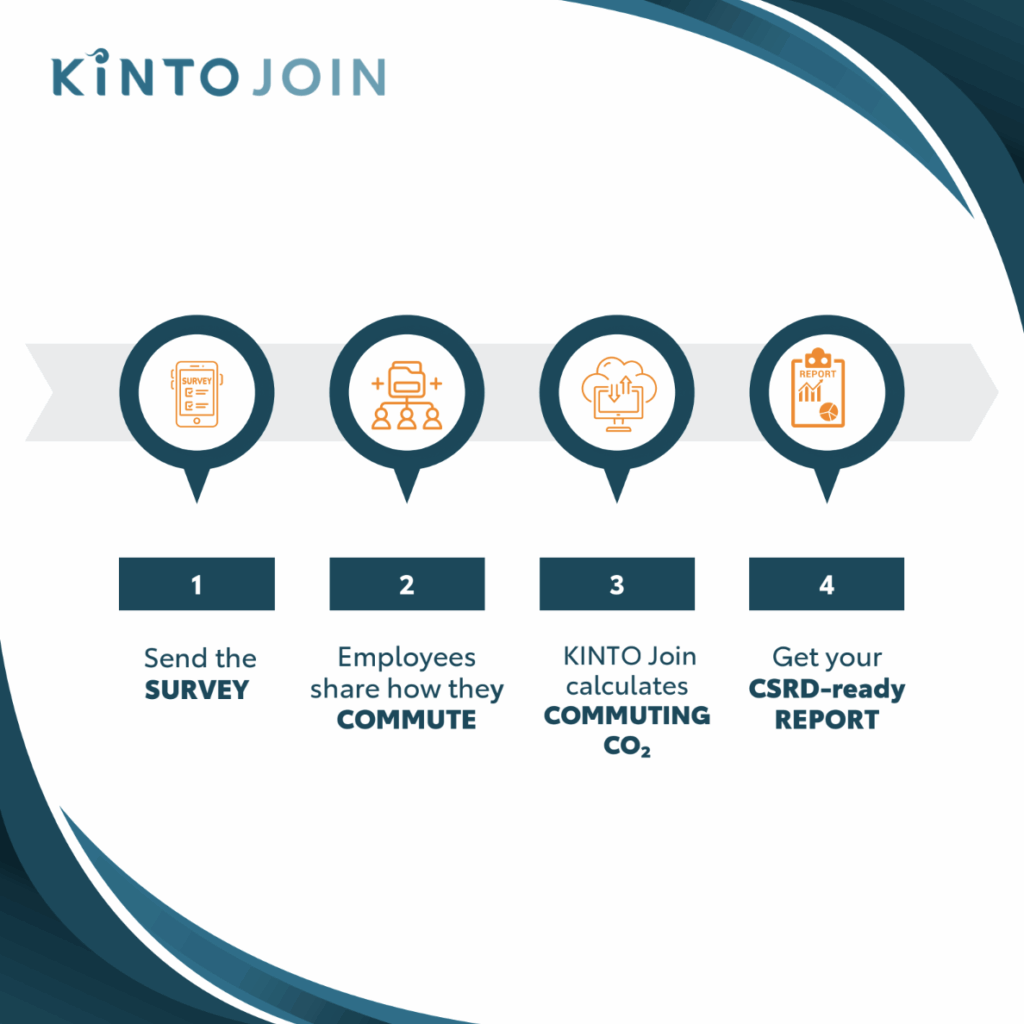When companies talk about sustainability, they usually start with the obvious: energy use, business travel, or waste reduction. But there’s another major source of emissions hiding in plain sight: how employees get to work.
Commuting habits are part of what’s known as Scope 3 emissions – the indirect emissions that come from everything a company doesn’t directly control: employee travel, purchased goods and services, waste disposal, business trips, and even how products are used. Together, Scope 3 can account for up to 70% of a company’s total carbon footprint, yet it’s often the hardest to measure accurately.
Why? Because data usually sits across different departments, suppliers, or, in the case of commuting, is simply unknown. Most companies rely on estimates or national averages instead of real information from their employees, which makes reporting incomplete and opportunities for improvement harder to identify.
The good news is that not every part of Scope 3 has to be complicated. Understanding employee commuting is one of the easiest ways to start building reliable sustainability data and one of the few areas where employers can directly influence change.
Beyond emissions, commuting also affects employee wellbeing, engagement, and even parking costs. By learning how your people actually travel to work, you can make better decisions for your team, your ESG goals, and the planet.
As an HR or Sustainability Director, you probably already know that Scope 3 emissions can be a headache.
The problem isn’t your commitment, it’s the data. You’re likely working with incomplete or inconsistent information: estimates from national averages, travel expense data, or educated guesses. None of it tells you how your people actually get to work every day.
And yet, commuting is often one of the largest contributors to a company’s Scope 3 footprint. In Ireland and the UK, over 60% of employees still drive to work, and 91% of car commuters travel alone (Ireland on the Move Survey 2025). That’s a massive amount of emissions and opportunity hidden in plain sight.
Without reliable data, it’s impossible to see where to act. You might be investing in new parking spaces when your employees need carpooling options, electric vehicle incentives, or better cycling infrastructure. You might also be missing valuable ESG data you’ll need for CSRD compliance.
Getting this right isn’t just about numbers. It’s about making smarter, evidence-based decisions that improve wellbeing, strengthen engagement, and reduce emissions, all at once. Because when you finally have clear, accurate commuting data, sustainability stops being a guessing game and becomes something you can manage.
Once you see how much commuting contributes to your organisation’s emissions and daily experience, it’s hard to unsee it. The good news? Solving it doesn’t require complicated models or endless spreadsheets.
Understanding how your employees travel gives you the power to act: to identify hotspots of CO₂ emissions, design fairer and greener commuting policies, and build a stronger sustainability narrative for your next ESG or CSRD report. It also helps you make the case internally for initiatives your people will genuinely appreciate: carpool incentives, shuttle options, cycling schemes, or flexible working support.
And here’s the best part: gathering this data doesn’t need to be expensive or time-consuming. We are offering you a tool to measure your employees’ commute emissions for FREE.

We know what you might be thinking: there’s always a catch.
But not this time.
At KINTO Join, we genuinely want to make ESG reporting simpler, smarter, and more practical for every company. The best way to prove that? By helping you start with one small, clear win: understanding how your employees commute.
The FREE Commuting Carbon Calculator gives you real data you can use, a CSRD-ready report showing your commuting-related Scope 3 emissions, no spreadsheets, no manual work, and absolutely no cost.
Here’s how it works:
You sign up for a free survey, and we share with you access to this part of our platform
No Excel sheets, no manual tracking, just clear, accurate data you can trust.
We believe sustainability shouldn’t be complicated, and we’ll guide you every step of the way.
Measure CO2 emissions from employee commutes with ease.